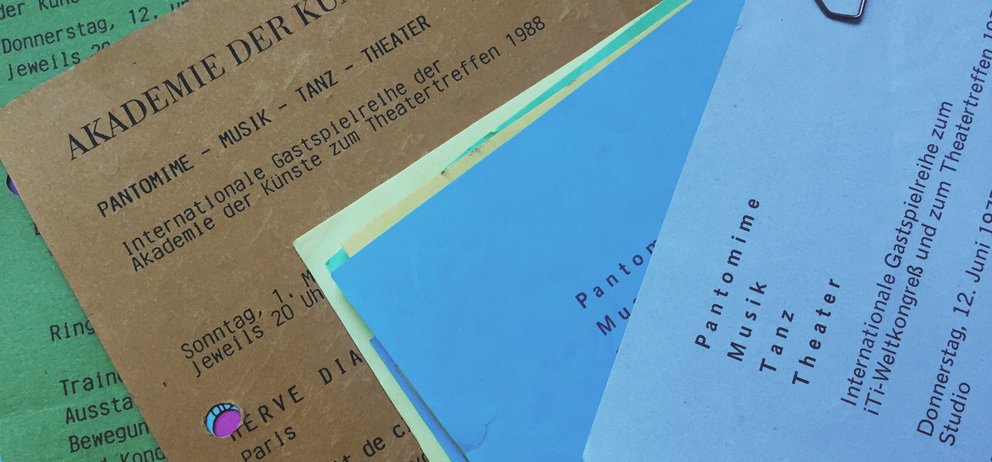PMTT
It all started in 1962, when the still-new Akademie der Künste (West) staged the exhibition International Pantomime (with an accompanying programme) in the new building designed by Werner Düttmann at Hanseatenweg 10. The exhibition was the ‘big bang’ moment from which the Akademie’s subsequent performance series emerged, which included:
- Formen zeitgenössischen Musiktheaters
(Forms of Contemporary Musical Theatre) 1967 - Theater, Pantomime, Ballett
(Theatre, Pantomime, Ballet) 1968 - Spiele und Beispiele
(Plays and Paradigms) 1970 - Kinder & Jugendtheater
(Children’s & Youth Theatre) 1971 - Kinder und Künste
(Children and the Arts) 1972 - Tanz & Theater
(Dance and Theatre) 1973 - musik&tanztheater
(music&dancetheatre) 1974
It wasn’t until 1975 that a coherent and sustainable performance format was developed that would accompany the Berliner Theatertreffen each year in May: Pantomime – Music – Dance – Theatre, or PMTT for short.
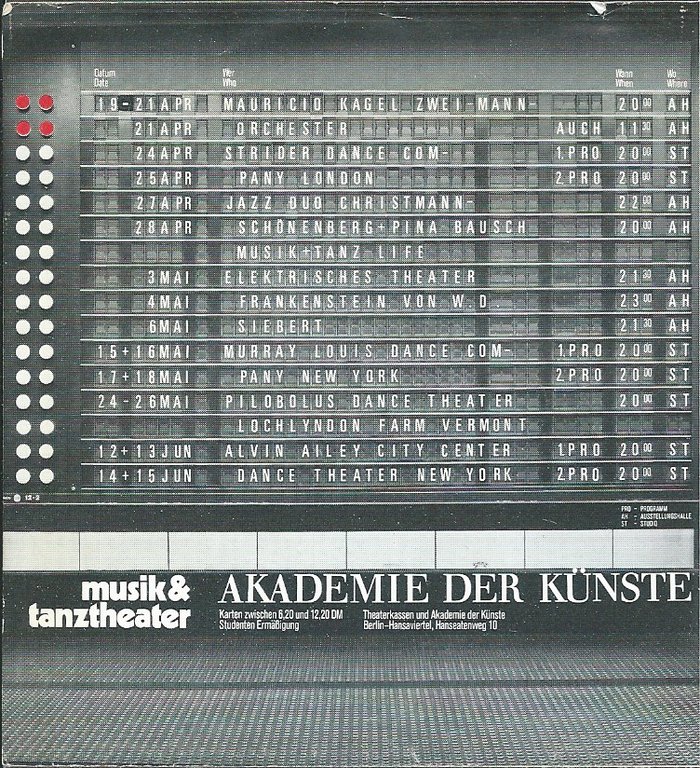
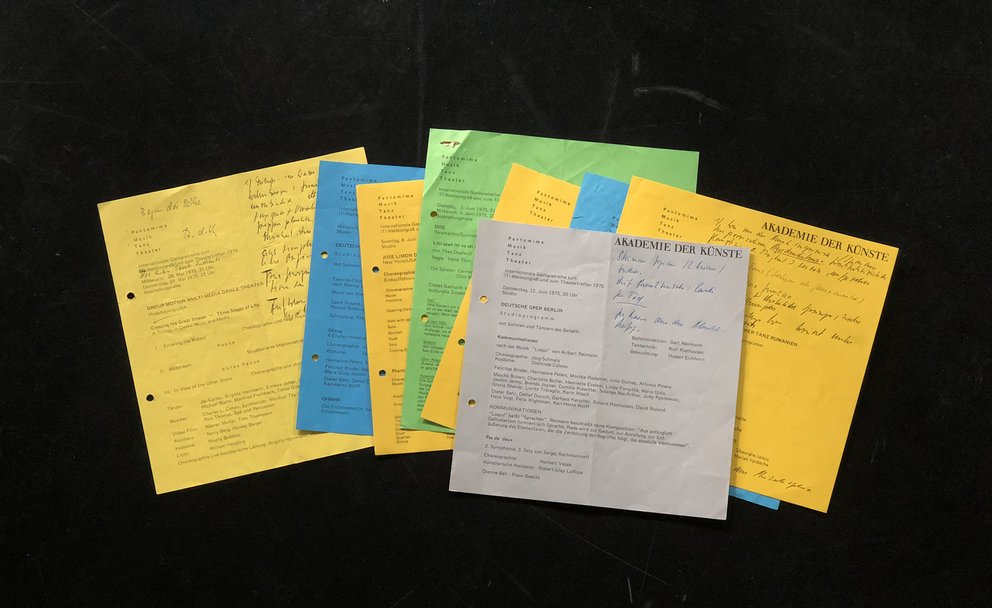
PMTT was a showcase for experiments and the only continual platform for international contemporary dance in West Berlin.
Nele Hertling and her colleague Dirk Scheper turned the Akademie der Künste into an ‘experimental studio’ for dancers and choreographers, which prompted the biting observation from music and ballet critic Klaus Geitel that “The Akademie der Künste as the stage of the future, and the really ‘futuristic’ pieces were anything that the public didn’t enjoy.”
The performance programmes listed in the catalogue in the Akademie der Künste archive read like a selected history of international contemporary dance.
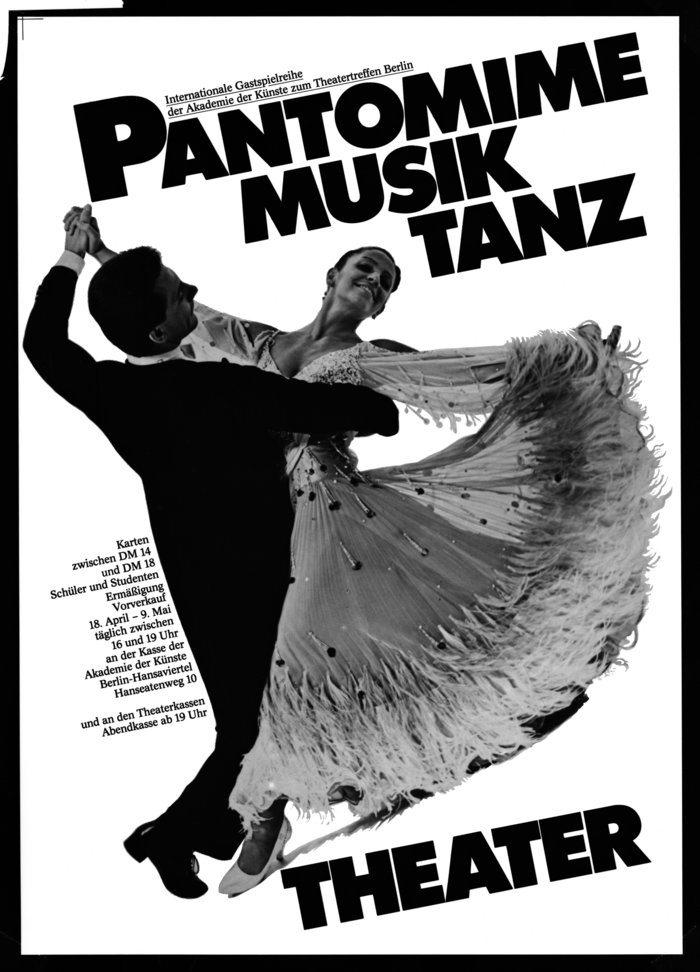
One month before the TanzWerkstatt was launched as part of the European Capital of Culture programme in West Berlin (E 88), the Akademie der Künste put on their international guest performance series alongside the Berliner Theatertreffen.
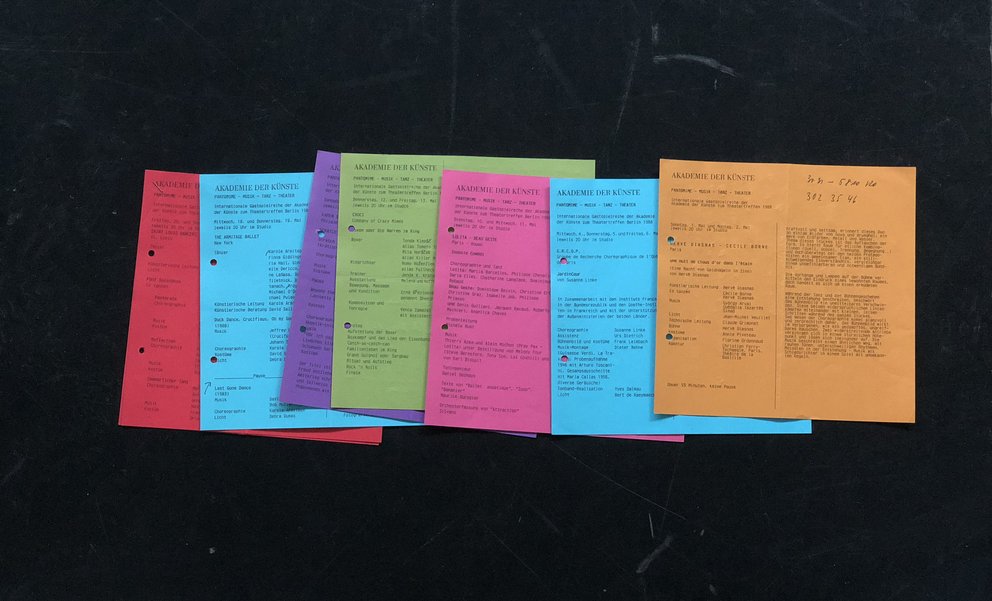
Following reunification, with the establishment and growing success of Tanz im August, which Nele Hertling, the politically savvy artistic director of Hebbel-Theater had pushed forward in collaboration with Ulrike Becker and André Thériault from TanzWerkstatt, PMTT became increasingly sidelined, with the final edition taking place in 1996. The concept had become irrelevant: who still wanted to see pantomime in 1990s Mitte? Too few.

